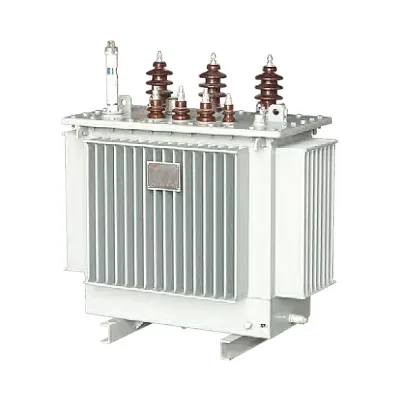SF6-Free Switchgear: The Sustainable Solution for a Greener Power Grid

I. Why Replace SF₆? The Environmental Imperative
-
Greenhouse Effect: A single kilogram of SF₆ traps as much heat as 23,500kg of CO₂ over a 100-year period. -
Leakage Risks: GIS systems, despite maintenance protocols, inevitably leak small amounts of SF₆ (industry estimates suggest 0.1%–1% annual leakage rates), contributing to cumulative emissions. -
Regulatory Pressure: The EU’s 2014 F-Gas Regulation phased out SF₆ in many applications, and similar restrictions are emerging globally (e.g., the Kigali Amendment to the Montreal Protocol targets high-GWP gases).
II. Key Technologies Enabling SF₆-Free Switchgear
1. Solid Insulation (Solid-Insulated Switchgear, SIS)
-
Zero SF₆ emissions: No gas means no leakage or environmental impact. -
Compact and modular: Smaller footprint than AIS, suitable for urban/suburban substations. -
High reliability: No moving parts (like gas-filled compartments) reduce failure risks. Examples: ABB’s SafePlus, Siemens’ NXPLUS C-SIS, and China’s Pinggao ZSS series.
2. Vacuum Interruption + Air/Solid Insulation
-
Proven vacuum technology: Vacuum interrupters have zero SF₆ dependency and long lifespans (up to 30,000 operations). -
Air-insulated variants (AIS): Use air as the insulating medium (e.g., for low-voltage or less space-constrained applications). -
Cost-effective: Lower material costs compared to SF₆ or complex solid insulation. Examples: Schneider Electric’s SM6 AirSeT (vacuum + SF₆-free gas alternative), GE’s g³ (green gas for grid, though not fully SF₆-free, is a transitional solution).
3. SF₆ Alternatives (e.g., “Green Gases”) with Air Insulation
-
Lower GWP: g³ has a GWP of <1 (vs. SF₆’s 23,500), significantly reducing emissions. -
Backward compatibility: Can be retrofitted into existing GIS designs. Limitations: Still relies on synthetic gases (though less harmful), and full elimination of fluorinated compounds remains the ultimate goal.
III. Performance and Reliability: Closing the Gap with SF₆
-
Dielectric Strength: Solid insulation (epoxy resin) and optimized air gaps in vacuum-based designs now match or exceed SF₆’s performance in MV applications (12kV–40.5kV). -
Arc Quenching: Vacuum interrupters and hybrid gas mixtures (like g³) ensure rapid, reliable arc extinction, even under high fault currents. -
Maintenance: SF₆-free systems typically require less upkeep (no gas pressure monitoring, no adsorbent replacement) and have longer component lifespans (e.g., epoxy resin insulation lasts >30 years).
IV. Applications and Market Adoption
-
Urban Infrastructure: Cities like Paris and Singapore have mandated SF₆-free GIS for new substations to meet carbon neutrality goals. -
Renewable Energy: Solar and wind farms use MV SF₆-free switchgear to connect distributed generation without adding greenhouse gas emissions. -
Industrial Plants: Factories with strict ESG commitments opt for SF₆-free solutions to align with sustainability targets.
V. Future Outlook: Scaling and Innovation
-
Material Science: Advances in nano-engineered epoxy resins and hybrid insulation materials to further improve dielectric performance and reduce costs. -
Digital Integration: Embedded sensors (e.g., partial discharge monitors, temperature sensors) enabling predictive maintenance and real-time health monitoring. -
Global Standards: Organizations like IEC and IEEE are developing unified testing protocols for SF₆-free technologies, ensuring interoperability and reliability.
البحث
الأقسام
- Art
- Causes
- Crafts
- Dance
- Drinks
- Film
- Fitness
- Food
- الألعاب
- Gardening
- Health
- الرئيسية
- Literature
- Music
- Networking
- أخرى
- Party
- Religion
- Shopping
- Sports
- Theater
- Wellness
إقرأ المزيد
Who Will the Chiefs Pick out inside Spherical 1? | 2025 Mock Draft Roundup 1. 0
The 2025 NFL Draft will be below in advance of we understand it, and as the league prepares in...
24/7 Locksmith Dubai , Emergency Door Unlocking & Key Replacement Experts
In a fast-paced city like Dubai, where homes, offices, and cars rely on advanced security...
"How to Spot Fake Feng Shui Jewelry (Don't Get Scammed!)"
Learn to identify authentic Feng Shui jewelry with these expert verification methods.
Red...
Confectionery Processing Equipment Market Opportunities: Growth, Share, Value, Size, and Scope By 2034
Regional Overview of Executive Summary Confectionery Processing Equipment Market by...
SK-II明星保養品全解析:青春露、小燈泡與代購選購指南
隨著保養意識的提升,越來越多消費者開始重視產品成分與效果兼具的保養品牌。來自日本的sk-ii,以其專利成分 PITERA™...



